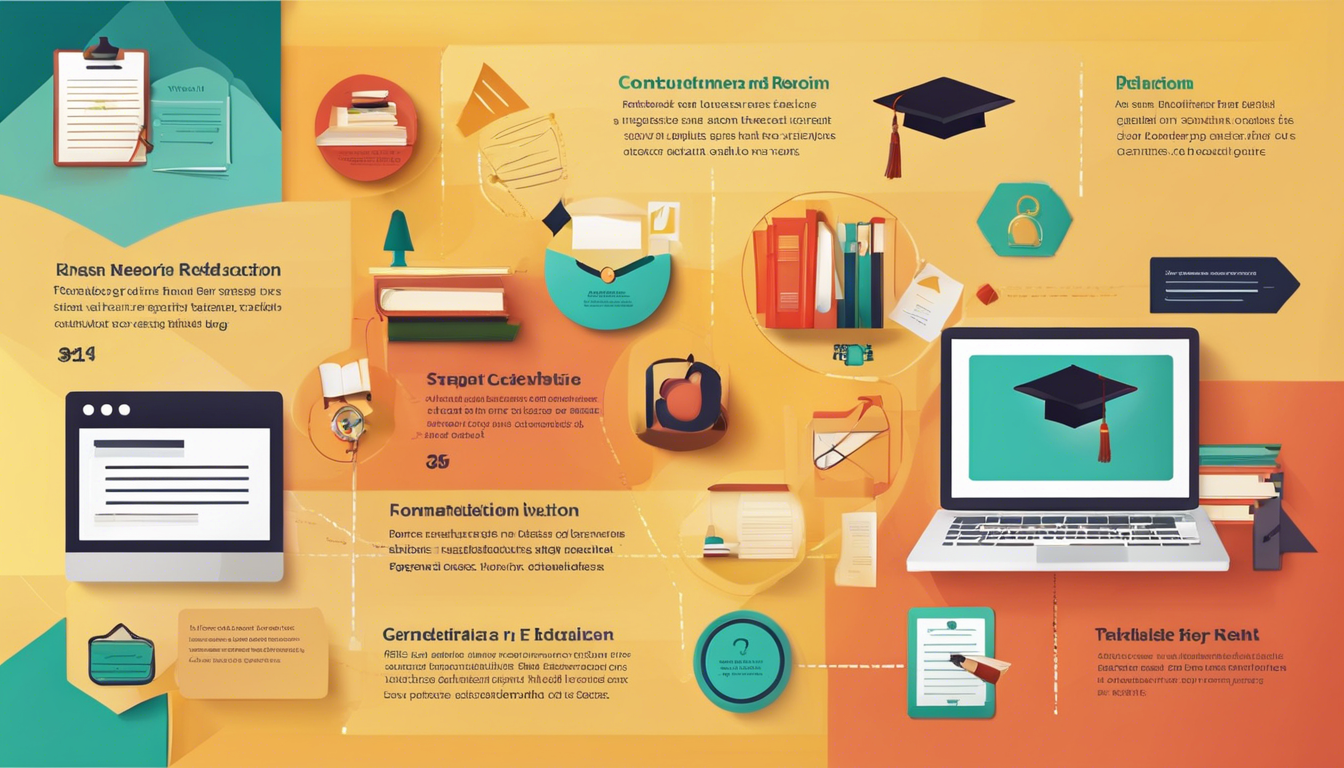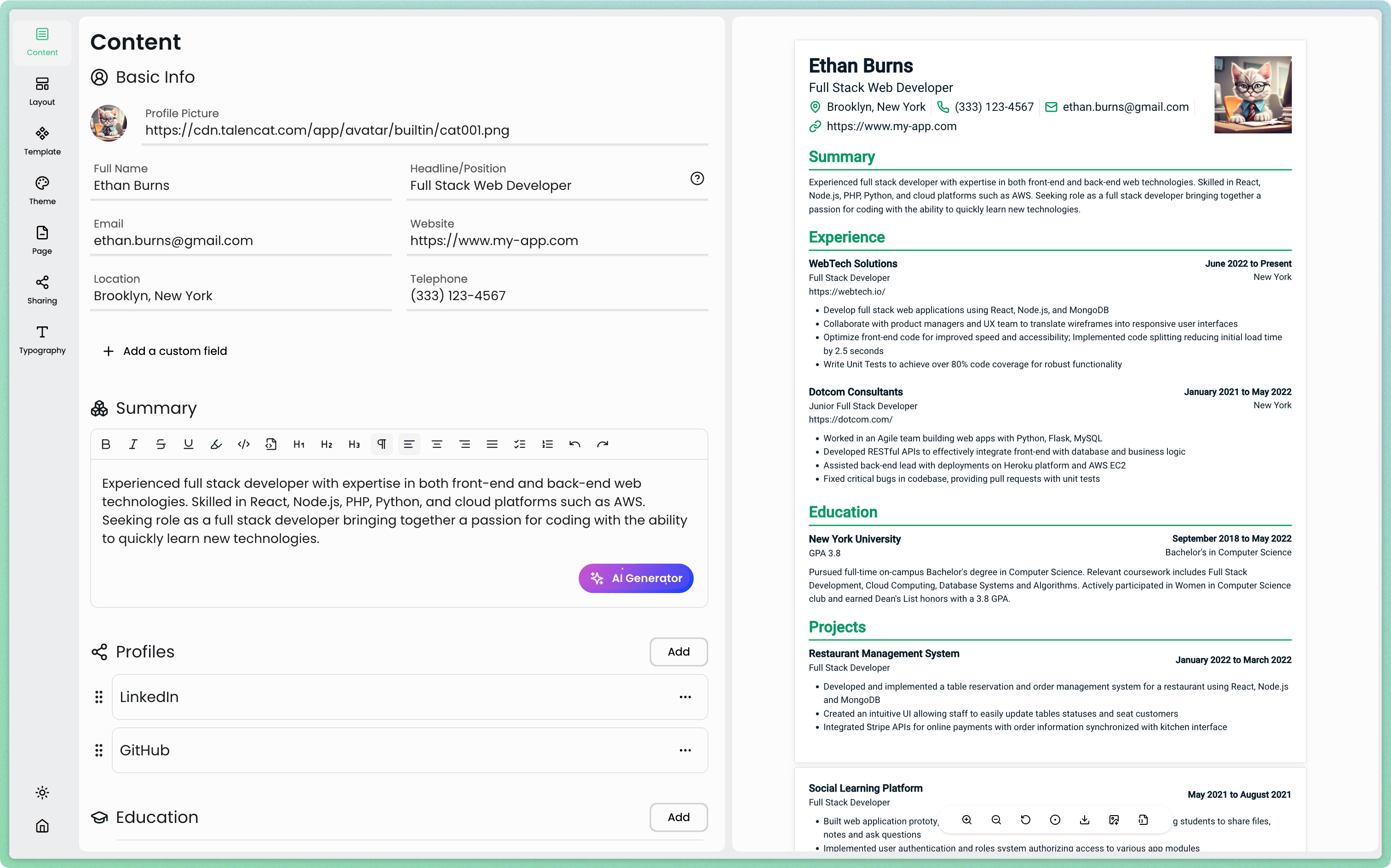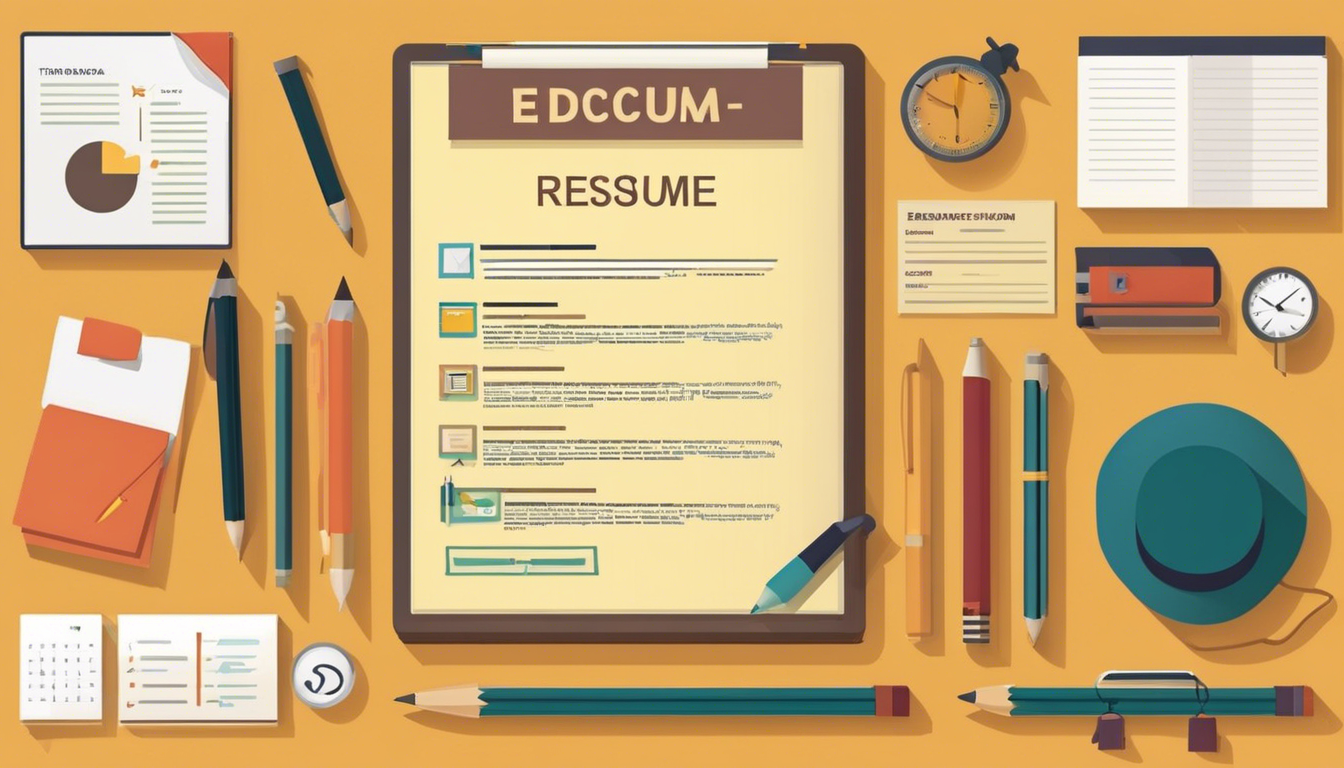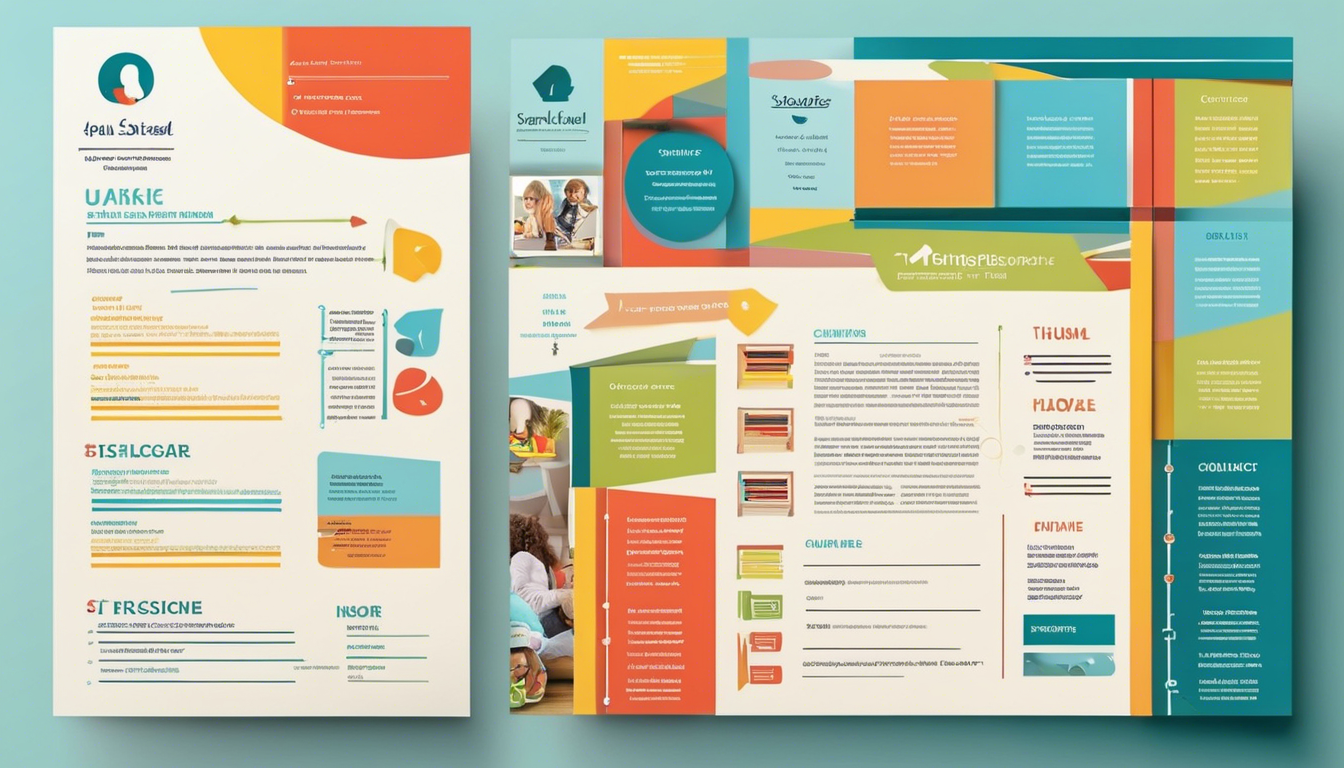While many job seekers focus on their work experience and skills, the education section of a resume often gets overlooked. However, this section can be a powerful tool to showcase your academic achievements and demonstrate your qualifications for a position. Whether you're a recent graduate or a seasoned professional, knowing how to effectively present your educational background can make a significant difference in catching the eye of potential employers.
Resume Building Series:







Introduction
Importance of Education on a Resume
Your educational background is a fundamental aspect of your professional profile. It provides employers with insights into your knowledge base, academic achievements, and areas of expertise. A well-crafted education section can:
- Demonstrate your qualifications for a specific role
- Highlight your commitment to learning and self-improvement
- Showcase relevant skills and knowledge acquired through your studies
- Provide context for your career trajectory
For many positions, especially entry-level roles or those in specialized fields, education is a key factor in the hiring decision. Even for experienced professionals, educational credentials can set you apart from other candidates and demonstrate ongoing professional development.
When to Include Education on Your Resume
Generally, you should always include your education on your resume. However, the prominence and detail of this section may vary depending on your career stage and the position you're applying for. Here are some guidelines:
- Recent graduates: Place your education section near the top of your resume, as it's likely your most relevant qualification.
- Experienced professionals: You can move your education section towards the end of your resume, after your work experience.
- Current students: Include your expected graduation date and highlight relevant coursework or academic projects.
- High school students: List your high school education if you haven't yet attended college.
Remember, the goal is to present your educational background in a way that best supports your candidacy for the specific job you're seeking.
How to List Education on a Resume
Creating an effective education section requires a clear, concise format that presents your academic credentials in a way that's easy for employers to scan and understand.
Basic Format for the Education Section
The standard format for listing education on a resume includes several key elements:
School Name
Start with the name of the institution you attended. Use the full, official name of the school to avoid any confusion.
Example: "University of California, Berkeley" instead of just "UC Berkeley"
Location of the School
Include the city and state (or country, if international) where the school is located. This provides context and can be especially important if the school isn't widely known.
Example: "Berkeley, California"
Degree Obtained
List the full name of your degree. Be specific about the type of degree (e.g., Bachelor of Arts, Master of Science).
Example: "Bachelor of Science in Computer Science"
Dates Attended
Include the year you graduated or expect to graduate. If you're still in school, list your expected graduation date. For experienced professionals, you may choose to list only the graduation year to avoid age discrimination.
Example: "Graduated: May 2022" or "Expected Graduation: June 2025"
Field of Study
Specify your major and, if applicable, your minor or concentration.
Example: "Major: Marketing, Minor: Psychology"
Putting it all together, a basic education entry might look like this:
University of California, Berkeley - Berkeley, California
Bachelor of Science in Computer Science
Graduated: May 2022
Major: Computer Science, Minor: Data Science
Reverse-Chronological Order
When listing multiple educational experiences, use reverse-chronological order. This means starting with your most recent or highest level of education and working backwards. This format allows employers to quickly see your most relevant and recent academic achievements.
Listing Multiple Degrees
If you have multiple degrees, list each one separately, following the same format. Start with the highest level of education or the most recent degree.
Example:
Stanford University - Stanford, California
Master of Business Administration
Graduated: June 2020
University of Michigan - Ann Arbor, Michigan
Bachelor of Arts in Economics
Graduated: May 2015
Including Relevant Coursework
For recent graduates or those changing careers, including relevant coursework can be beneficial. This helps demonstrate specific knowledge areas that may be applicable to the job you're seeking.
Example:
Relevant Coursework: Data Structures, Algorithms, Machine Learning, Artificial Intelligence

How to Write Resume Education with TalenCat CV Maker
When it comes to crafting a compelling resume, the education section is crucial. TalenCat CV Maker offers an intuitive platform to help you create a professional resume with a well-structured education section. Follow this step-by-step guide to effectively showcase your academic achievements using this online resume builder.
Step 1: Log in to TalenCat CV Maker and start a new resume by clicking the "+ Create Resume" button in the top right corner.

Step 2: Name your resume and choose to create from scratch or use a template that highlights education.

Step 3: In the resume editor, navigate to the education section. Here, you can add your academic qualifications, ensuring they are prominently displayed.

When writing your education section:
- List your highest degree first
- Include the name of the institution, location, degree, and graduation date
- Add relevant coursework, academic honors, or GPA if impressive
- Tailor the education section to the job you're applying for
TalenCat CV Maker's AI-powered suggestions can help you optimize your education section for maximum impact. The platform offers real-time previews, allowing you to see how your education details appear on the final resume.

Once you've perfected your education section and the rest of your resume, you can easily export it as a PDF or enable online sharing for convenient distribution to potential employers.
Remember, a well-crafted education section can set you apart from other candidates, especially if you're a recent graduate or changing careers. TalenCat CV Maker provides the tools and guidance to ensure your academic achievements shine on your resume.
Examples of Education Sections
Example for Recent Graduates
EDUCATION
University of Texas at Austin - Austin, Texas
Bachelor of Science in Mechanical Engineering
Graduated: May 2023
GPA: 3.8/4.0
Honors: Dean's List (All Semesters)
Relevant Coursework: Thermodynamics, Fluid Mechanics, Machine Design, Robotics
Senior Project: Designed and built a solar-powered water purification system for developing countries
In this example, the recent graduate includes their GPA (if it's impressive), honors, relevant coursework, and a significant project to showcase their skills and knowledge.
Example for Experienced Professionals
EDUCATION
Harvard Business School - Boston, Massachusetts
Master of Business Administration
Graduated: June 2015
University of California, Los Angeles - Los Angeles, California
Bachelor of Arts in Economics
Graduated: May 2010
For experienced professionals, the education section is typically more concise, focusing on the degrees obtained and the institutions attended.
Example for High School Students
EDUCATION
Westfield High School - Houston, Texas
High School Diploma
Expected Graduation: June 2024
GPA: 3.9/4.0
Honors: National Honor Society, AP Scholar with Distinction
Relevant Coursework: AP Calculus, AP Physics, AP Computer Science
High school students should include their expected graduation date, GPA (if it's strong), any honors or awards, and relevant advanced coursework.
Tips for Highlighting Education
Deciding Placement Based on Job Requirements
The placement of your education section should be strategic:
- If the job listing emphasizes educational requirements, consider placing your education near the top of your resume.
- For roles that prioritize work experience, place your education after your professional history.
- If you're a recent graduate or your education is your strongest qualification, lead with your education section.
Tailoring the Education Section for Specific Roles
Customize your education section to align with the job you're applying for:
- Highlight relevant coursework or projects that directly relate to the job requirements.
- If you have multiple degrees, emphasize the one most relevant to the position.
- Include any certifications or additional training that support your qualifications for the role.
Emphasizing Honors and Awards
Academic achievements can set you apart from other candidates:
- List academic honors such as cum laude, magna cum laude, or summa cum laude.
- Include scholarships, dean's list recognitions, or departmental awards.
- Mention any thesis or dissertation titles if they're relevant to the job.
Example:
EDUCATION
Yale University - New Haven, Connecticut
Bachelor of Arts in Psychology
Graduated: May 2021, Summa Cum Laude
Honors: Phi Beta Kappa, Dean's List (All Semesters)
Awards: Outstanding Senior Thesis Award
Thesis: "The Impact of Social Media on Adolescent Mental Health"
Common Mistakes to Avoid
When crafting your education section, be aware of these common pitfalls:
Listing Incomplete Education
If you attended a college or university but didn't complete your degree, be honest about it. You can still include the education, but be clear about your status:
University of Oregon - Eugene, Oregon
Completed 60 credits towards a Bachelor of Science in Biology
Attended: 2018-2020
Overemphasizing Unrelated Coursework
While it's good to showcase your diverse knowledge, focus on courses and projects that are most relevant to the job you're applying for. Listing every class you've taken can clutter your resume and distract from your key qualifications.
Falsifying Information
Never lie or exaggerate about your educational background. Employers often verify educational credentials, and dishonesty can lead to immediate disqualification or termination if discovered later.
How to Address Gaps in Education
What to Include if You Don't Have a Degree
If you don't have a college degree, focus on other forms of education and training:
- List any relevant certifications or professional development courses.
- Include workshops, seminars, or online courses you've completed.
- Highlight any on-the-job training or apprenticeships.
Example:
EDUCATION AND PROFESSIONAL DEVELOPMENT
Google IT Support Professional Certificate - Coursera
Completed: March 2023
CompTIA A+ Certification
Obtained: January 2022
High School Diploma
Westfield High School - Houston, Texas
Graduated: June 2020
Strategies for Highlighting Skills and Experience Instead
If your education is limited, shift the focus to your skills and work experience:
- Create a prominent "Skills" section that showcases your relevant abilities.
- Emphasize your work experience and accomplishments in your chosen field.
- Include a "Professional Development" section to show your commitment to ongoing learning.
Example:
PROFESSIONAL DEVELOPMENT
- Completed "Advanced JavaScript" course on Udemy (2023)
- Attended "Web Accessibility Workshop" at local tech meetup (2022)
- Participated in "Agile Project Management" seminar (2021)
Conclusion
Recap of Best Practices for Listing Education
To create an effective education section on your resume:
- Use a clear, consistent format for each entry.
- List your highest or most recent degree first.
- Include relevant details such as honors, GPA (if impressive), and coursework.
- Tailor the section to the job you're applying for.
- Be honest about your educational background.
- Consider the placement based on your career stage and the job requirements.
Final Thoughts on Crafting a Compelling Education Section
Your education section is more than just a list of degrees; it's an opportunity to showcase your knowledge, skills, and commitment to learning. By thoughtfully presenting your educational background, you can demonstrate to employers that you have the academic foundation and intellectual curiosity necessary to excel in the role you're seeking.
Remember that your resume is a living document. As you progress in your career, continue to update and refine your education section to reflect your most current and relevant qualifications. Whether you're a recent graduate or a seasoned professional, a well-crafted education section can be a powerful tool in your job search arsenal, helping you stand out from the competition and land the opportunities you desire.
By following these guidelines and tailoring your approach to your unique situation, you can create an education section that effectively communicates your academic achievements and supports your career goals. With a strong education section complementing your work experience and skills, you'll be well-positioned to impress potential employers and take the next step in your professional journey.



